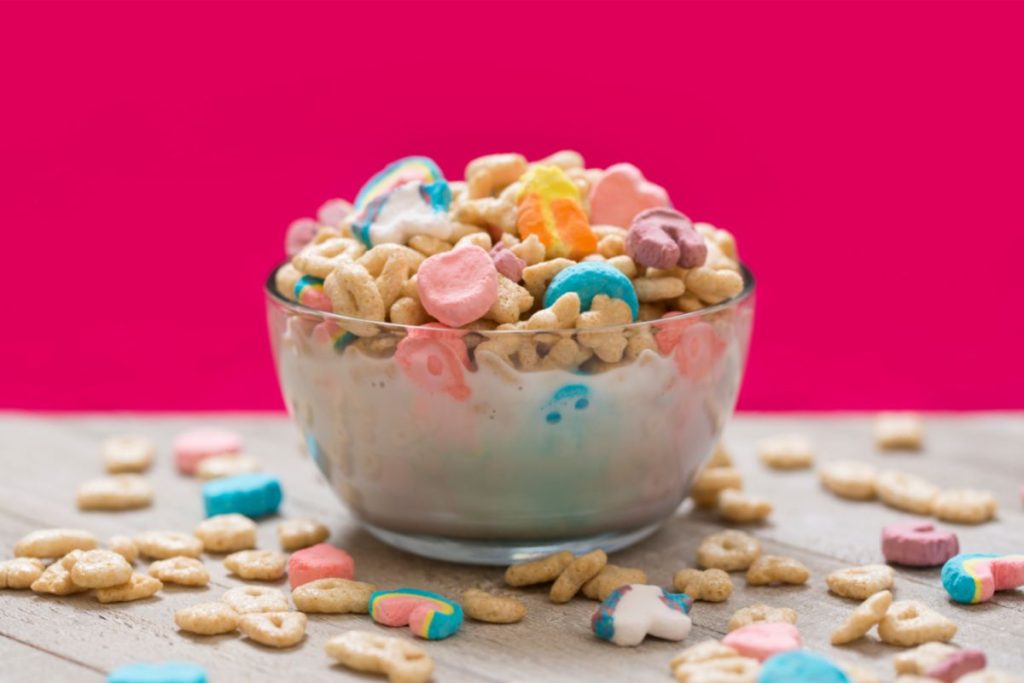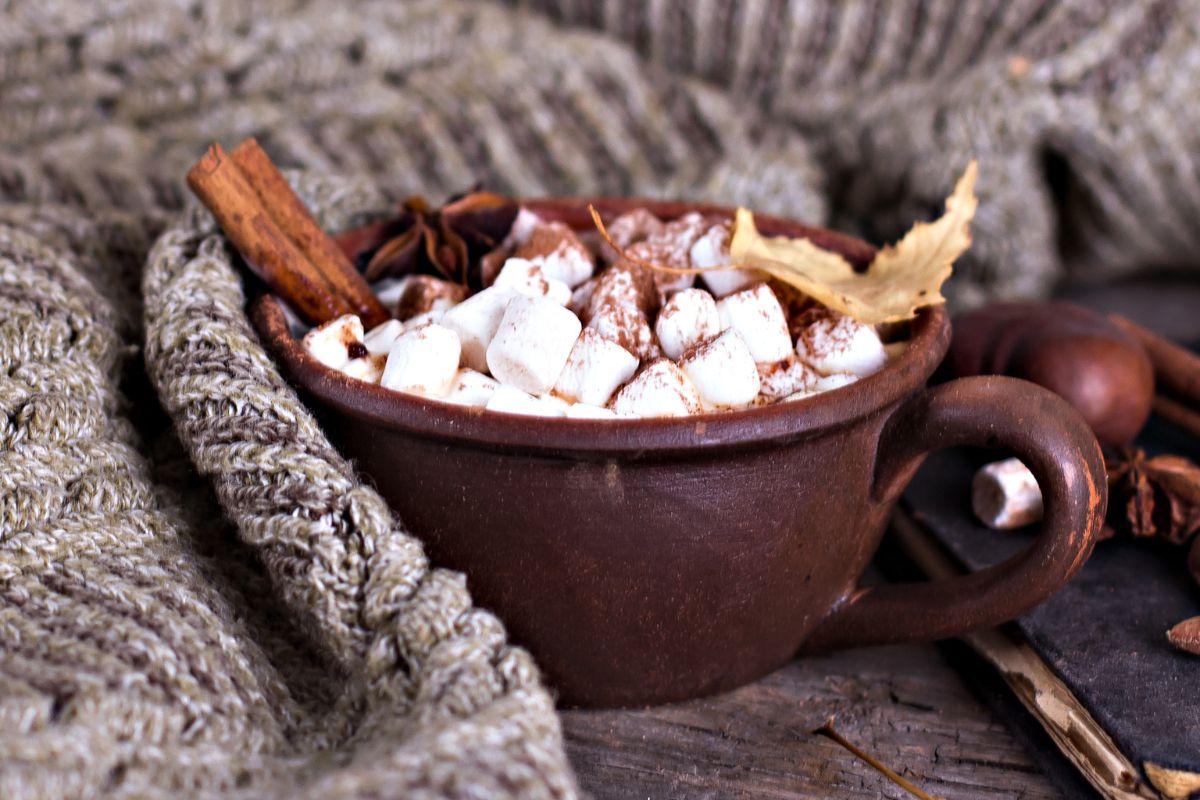Making dehydrated marshmallows using a food dehydrator or oven is easy. Unlike other types of foods, marshmallows require little preparation before drying them. Set the temperature to 125°F and dehydrate for 6-12 hours. Enjoy dehydrated marshmallows in cocoa or cereal, or grind them into a powder once dried.
Table of Contents
How to Dehydrate Marshmallows Using a Food Dehydrator
The best way to make dehydrated marshmallows is in a food dehydrator because it keeps a consistent, low temperature.
Here are instructions for drying marshmallows in a dehydrator:
- Arrange homemade or store-bought marshmallows in a single layer on the food dehydrator trays, leaving spaces between the marshmallows. Use scissors or a sharp knife to cut large marshmallows into smaller pieces for faster drying, if desired.
- Set the food dehydrator to 125°F.
- Dry the marshmallows for 6-12 hours for large pieces or 4-6 hours for mini marshmallows.
- After the recommended time, remove a few of the marshmallows from the dehydrator and let them cool to room temperature. Test them for dryness. If they are still squishy, dehydrate them longer in one-hour increments.
- Once they are completely dry and firm to the touch, allow the marshmallows to cool before storing them in airtight containers.
How to Make Dehydrated Marshmallows in an Oven
Making dehydrated marshmallows in an oven is even faster than using a food dehydrator but can be tricky if your oven doesn’t have a low-temperature setting.
Here’s what you need to do to make marshmallows in an oven:
- Preheat the oven to the lowest setting. This should be between 125°F and 150°F.
- Place marshmallows in a single layer on a baking sheet lined with parchment paper. Leave enough spaces between them because marshmallows inflate during the dehydration process.
- Place the baking sheet in the oven and dehydrate at the lowest temperature for four hours or until the marshmallows are completely dry. Mini ones will dry in 1-2 hours, regular marshmallows in 2-4 hours, and large ones in 4-6 hours.
- Check the drying progress every 20 minutes and flip the marshmallows each time to avoid burning or melting them. If you have a standard non-convection oven, prop open the oven door with a wooden spoon to allow moisture to escape.
- Once fully dried, allow the marshmallows to cool to room temperature before storing them.
Can You Dehydrate Marshmallows in an Air Fryer?
You can dehydrate marshmallows in an air fryer. Here’s how to do it:
- Preheat the air fryer to 135°F.
- Put the soft marshmallows in the air fryer basket or tray in a single layer and bake them at the lowest setting. Mini marshmallows take three hours, and regular marshmallows take four hours.
- Check on the marshmallows every 15 minutes while dehydrating, and shake the basket each time for uniform drying.
- Once dry, remove the marshmallows from the basket and allow them to cool before storing them.
What Do You Do to Make Dehydrated Mini Marshmallows?
The drying process remains the same when using a food dehydrator or oven to make mini marshmallows. You will only notice a difference in the drying time required – because of their smaller size, mini marshmallows dehydrate faster.
You can dehydrate mini marshmallows right out of the package. Alternatively, you can cut up larger marshmallows into smaller ones to make your own mini marshmallows. Cutting adds a bit of prep time but saves you several hours of drying time.
Use sharp, clean scissors or a sharp knife to trim marshmallows. The texture of marshmallows makes it difficult to work with them as they can be sticky.
Save time by occasionally dusting the cutting tool with powdered sugar or cleaning it with a wet kitchen cloth. You can also mix equal parts of cornstarch and powdered sugar to dust the trimmed marshmallows to help prevent them from sticking together.
Easy Steps for Making Marshmallow Powder
You can make marshmallow powder from dried marshmallows. Here’s how to do it:
- Put the dried marshmallows into a grinder, such as a coffee grinder or blender.
- Pulse the marshmallows briefly while occasionally shaking them to bring larger pieces to the bottom for complete grinding.
- Once a fine powder has formed, use a funnel to transfer the marshmallow powder into a clean, dry container.
Ideas for Using Marshmallow Powder
Like whole marshmallows, dry marshmallow powder has many uses:
- Dip bitter fruits in the powder to make them sweeter
- Flavor hot tea with peppermint-flavored marshmallow powder
- Sprinkle marshmallow powder on top of lattes to make latte art
- Substitute confectioner’s sugar with marshmallow powder in baked treats
- Use it to flavor hot cocoa or hot chocolate
Are Cereal Marshmallows Dehydrated Marshmallows?
Cereal marshmallows are dehydrated marshmallows. Commercial brands like General Mills use dried marshmallows in some of their cereals, such as Lucky Charms. The milk rehydrates the dehydrated marshmallows, which is a complement to the crunchy texture of the cereal.

Why Would You Want to Dehydrate Marshmallows?
Dehydrating fresh marshmallows prolongs their shelf life. Once you open a package of marshmallows, you must use them all within a short time, or they get stale. Drying them helps avoid food waste.
You can use dehydrated marshmallows in various ways:
- Add flavor and texture to hot chocolate recipes
- Add to traditional desserts such as brownies or s’mores
- Add to Rice Krispies cereal treats for extra texture
- Add to trail mix alongside dried fruit, seeds, and nuts
- Decorate cupcakes
- Eat them as a sweet and crunchy snack on a hike or around a campfire
- Use as an ice cream topping
How to Store Dehydrated Marshmallows
The best way to store dehydrated marshmallows for a year or more is to keep them in a mylar bag with an oxygen absorber.
You can also store dehydrated marshmallows for six months in airtight containers such as mason jars in a cool, dry place.

